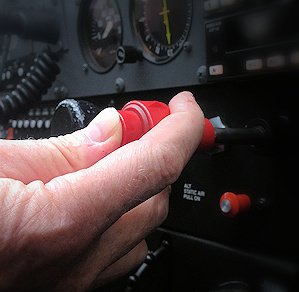Subscriber question:
"I know there has been much written on running an engine lean of peak. I'm new to this, so I'd appreciate a quick overview on what it means, the pros and cons, and when you'd use it. Thanks." - Scott H.
Tom:
 “Lean of peak is an option just as short field takeoff is an option or filing IFR in clear skies is an option—you should know how to do it and may choose to do it all the time regardless of conditions. The reality is that many times lean of peak is a good idea, other times you may want to fly rich of peak.
“Lean of peak is an option just as short field takeoff is an option or filing IFR in clear skies is an option—you should know how to do it and may choose to do it all the time regardless of conditions. The reality is that many times lean of peak is a good idea, other times you may want to fly rich of peak.
Lean, rich or peak, what we’re referring to is the mixture setting. Beginning at full rich, as you reduce the fuel flow (i.e. you lean the engine) the exhaust gas temperature will rise. Eventually, it reaches a maximum, or peak temperature (peak EGT) and any further leaning causes the EGT to drop.
Mixture settings that are rich of peak EGT provide more power. The airplane flies faster, but the engine burns more fuel and cylinder head temperatures run hotter. Lean of peak EGT settings run cooler, in large part because the engine is developing less power. As a result, the airplane flies slower, sometimes significantly so. But endurance is increased because the fuel burn rate is lower.
Many engines run unacceptably rough on the lean side of peak. If your engine runs smoothly on the lean side, however, you have a choice: run your engine lean of peak to save fuel, extend the airplane’s range and keep the cylinders cool. If you prefer to fly faster run rich of peak, but you’ll burn more fuel. And if your cylinders tend to run hot you may have to run very rich to keep CHTs under control.
It’s worth learning more about mixture management to be able to use the option that suits your particular engine and your flight performance goals.”
Do you run your engine lean-of-peak in cruise?
